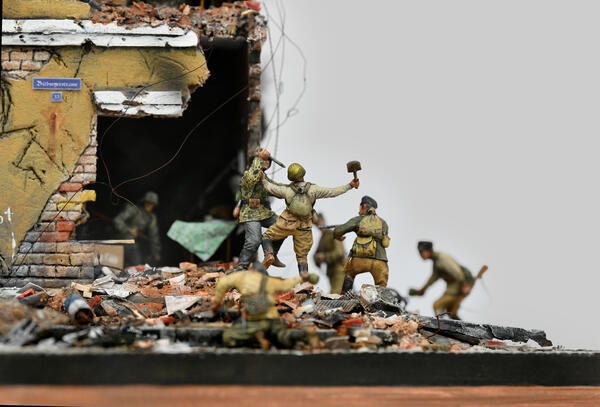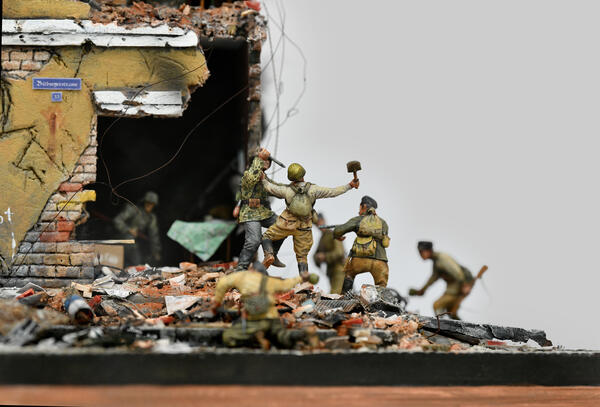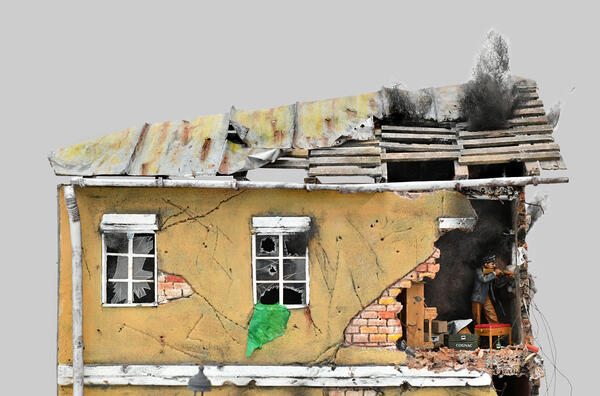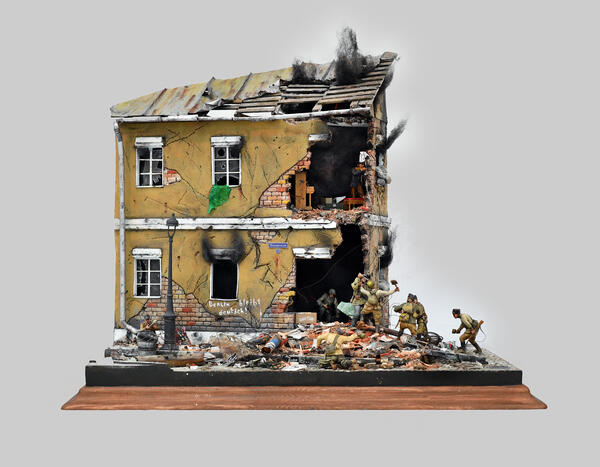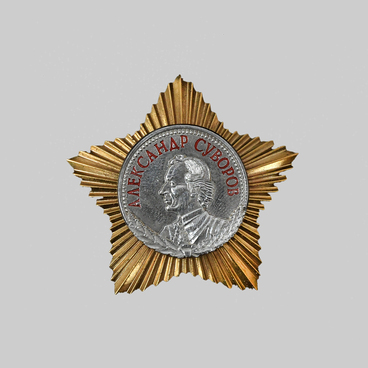The museum houses a small model called “Guardsmen in Berlin”. The model depicts the corner of a dilapidated house: shells destroyed the roof and a part of the wall, forming a pile of ruins in front of the building. The gaping hole in the second story wall reveals the room furnishings. Below there are figures depicting the guardsmen in the heat of a fight.
The 112th Bashkir (16th Guards) Cavalry Division participated in the Battle of Berlin as part of the 7th Guards Cavalry Corps.
On April 26, 1945, soldiers of the 7th Guards Cavalry Corps began storming the town of Brandenburg, 40 kilometers west of Berlin. It was the cavalrymen who tightened the assault around Berlin during the final stage of the Great Patriotic War.
During the storming of Brandenburg, the horse guards distinguished themselves with great stamina and true bravery. The 3rd Squadron of the 60th Guards Cavalry Regiment crashed the Silo Canal on the run and captured a bridgehead on its southern coast. The enemy managed to blow up the bridge over the canal and cut off the squadron from the main forces of the regiment. Under the cover of strong mortar, artillery and machine-gun fire, the Nazis prevailed upon the battle formations of the cavalrymen, launching numerous counterattacks. Senior Sergeant Nikolay Chernenko and Private Alexander Panov repeatedly forced the enemy to retreat with great losses by opening up a heavy fire from their machine guns. The courageous machine gunners were awarded the title of Hero of the Soviet Union. On May 1, 1945, Brandenburg was finally occupied by the Soviet soldiers.
On May 2, the 16th Guards Cavalry Division was instructed to storm the town of Premnitz, 40 km north of Brandenburg. The task was quickly accomplished.
In total, 12 cavalry divisions, that is almost 100,000 cavalrymen, took part in the Battle of Berlin.
The 112th Bashkir (16th Guards) Cavalry Division participated in the Battle of Berlin as part of the 7th Guards Cavalry Corps.
On April 26, 1945, soldiers of the 7th Guards Cavalry Corps began storming the town of Brandenburg, 40 kilometers west of Berlin. It was the cavalrymen who tightened the assault around Berlin during the final stage of the Great Patriotic War.
During the storming of Brandenburg, the horse guards distinguished themselves with great stamina and true bravery. The 3rd Squadron of the 60th Guards Cavalry Regiment crashed the Silo Canal on the run and captured a bridgehead on its southern coast. The enemy managed to blow up the bridge over the canal and cut off the squadron from the main forces of the regiment. Under the cover of strong mortar, artillery and machine-gun fire, the Nazis prevailed upon the battle formations of the cavalrymen, launching numerous counterattacks. Senior Sergeant Nikolay Chernenko and Private Alexander Panov repeatedly forced the enemy to retreat with great losses by opening up a heavy fire from their machine guns. The courageous machine gunners were awarded the title of Hero of the Soviet Union. On May 1, 1945, Brandenburg was finally occupied by the Soviet soldiers.
On May 2, the 16th Guards Cavalry Division was instructed to storm the town of Premnitz, 40 km north of Brandenburg. The task was quickly accomplished.
In total, 12 cavalry divisions, that is almost 100,000 cavalrymen, took part in the Battle of Berlin.

